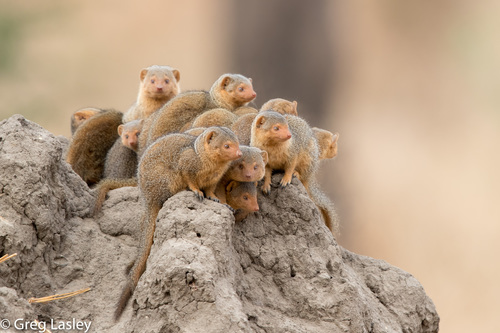
Common Dwarf Mongoose
The Dwarf Mongoose, Helogale parvula, is a tiny, sociable hunter of Africa's savannas. Agile and vocal, it thrives in cooperative groups, adeptly capturing insects. Its role in pest control and its intricate social structure make it a fascinating component of its ecosystem.
10-15 years
Lifespan
300.0 - 5000.0 g
Weight
Brown, Grey, Tan
Color
20 mph
Top Speed
Least Concern
Conservation Status
Stable
Population Trend
Characteristics
The Dwarf Mongoose (Helogale parvula) is the smallest African mongoose, typically weighing less than a pound. It inhabits savannas and open forests in sub-Saharan Africa. Social and diurnal, it lives in cooperative groups, hunting insects and small vertebrates. Its agility and sharp vocalizations aid in communication and defense.
Distribution Range of the Common Dwarf Mongoose
Helogale parvula, commonly known as the common dwarf mongoose, is native to sub-Saharan Africa. Its geographical distribution includes countries such as Angola, Botswana, Burundi, Democratic Republic of the Congo, Eswatini, Ethiopia, Kenya, Malawi, Mozambique, Namibia, Rwanda, South Africa, Tanzania, Uganda, Zambia, and Zimbabwe. It is predominantly found in the eastern and southern regions of Africa.
Common Dwarf Mongoose's Habitat
Environmental Conditions
The common dwarf mongoose typically inhabits savannas and open forests. It thrives in areas with a warm climate and moderate to low rainfall. These regions often feature a mix of grasslands and sparse trees or shrubs, providing both cover and open spaces for foraging.
Ecological Niche
As a diurnal and social species, the common dwarf mongoose occupies a niche where it forages for insects and small vertebrates during the day. It lives in cooperative groups, often utilizing abandoned termite mounds or burrows for shelter. This species is well-adapted to living in environments with fluctuating resources, relying on its social structure for survival and efficiency in foraging.
Copyright @ Nature Style Limited. All Rights Reserved.
 English
English